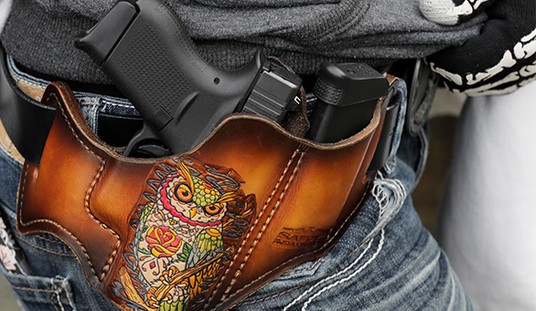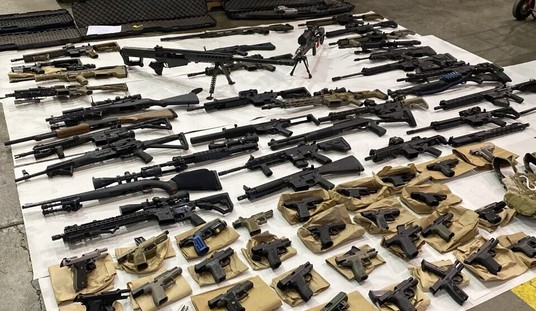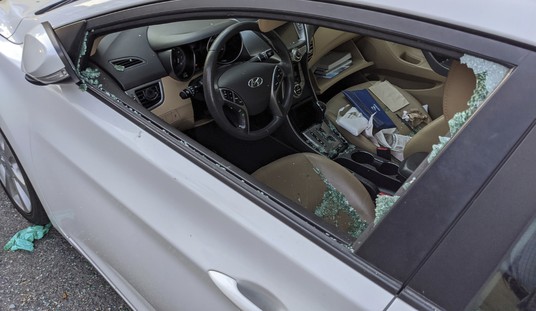[Read Rifle Dynamics AK Builder & Armorer Class, Part 2: So You Wanna Build an AK?]
When I first got wind of the Rifle Dynamics Build Your Own AK course being held in Jacksonville, NC, I contacted the company to see if I might be able to come down and cover a day of the build class to get a flavor of what building an AK is really about, and to learn how their process differs from AK “build parties” that many of us have read about in both internet gun forums and in bed-wetting anti-gun news outlets.
Instead of just allowing me to come down for the day to take pictures and report, Rifle Dynamics graciously invited to attend the 2 1/2 day course and assemble an AKM with my own lily-white, non-calloused journalist hands… an offer I couldn’t refuse.
I arrived on Friday shortly before noon at Progressive Service Die Company, a machine shop that specializes in making things that make things. Though I didn’t know it until after I arrived, this is where Rifle Dynamics held their very first build class two years ago.
It was there that the attendees gathered, and we did the expected paperwork absolving those running the event of injuries or deaths that may result from screwing up during the build or the following shoot. and received our NoDak Spud receivers that would be the foundation of our builds. The receiver serial numbers each matched up to a black trashbag full of parts, where parts were further separated into five clear plastic bags by functions, holding parts that we’d use at different stages of the build.
We then sat down to listen to Jim Fuller, the founder of Rifle Dynamics, as he began to explain the history and build philosophy of the most heavily produced military firearm family in the history of the world.

Jim explained that the original “Type 1” AK-47 was a failure. The Soviets didn’t have the technology to consistently weld the rails inside the stamped sheet metal receivers, and they couldn’t perfect the heat-treating process needed to correctly harden the receiver. Many of these early receivers were rejected outright due to the welding issues. Many of those that passed initial inspection weren’t heat-treated properly afterward, and if the receiver metal was too hard or too soft, the gun would destroy itself—sometimes catastrophically—within a thousand rounds. Incidentally, this is still one of the most common cause of home-built AKM failures when rifles are built from receiver flats and they aren’t properly heat-treated.
To address these technological problems, the Soviets shifted to a thicker milled receiver for their “Type 2” AKs. Improvements continued to be made to this milled designed, and eventually became the “Type 3,” the last of the AK-47s.
The Type 2 and Type 3 AKs were also the first mass-produced AKs, though relatively few of them still exist.
Eventually, the technological deficiencies in welding and heat treating the preferred stamped receiver were overcome. In 1959 a much lighter and improved weapon based upon a new stamped sheet metal receiver was released. The Avtomat Kalashnikova Modernizirovanniy or AKM is the basis of all modern AK-based firearms, and it is the AKM that has been mass-produced, copied, used on battlefields around the world.
It seems that the “AK-47” that we all know isn’t an AK-47 after all.
The design philosophy behind the AKM is radically different from that of the most popular rifle sold in the United States today, the AR-15. Eugene Stoner’s rifle was built with aerospace metals and tight tolerances with accuracy in mind. That tradition continues today as AR manufacturers increasingly shift to computer-aided design (CAD) and computer-assisted manufacturing (CAM). It’s all about precision, both on the manufacturing floor and on the firing line. Most western rifle manufacturers have continued with a similar design philosophy, emphasizing tight tolerances that enhance accuracy and ease the replacement of factory parts with aftermarket enhancements.

The AKM? It’s a different beast entirely.
“It’s more like blacksmithing than gunsmithing,” Fuller confesses, and he’s not kidding in the slightest. On more than one occasion, either he or Cho took an offending part to the floor and whacked it with the closest mallet, hammer, or wrench to make something fit.
Parts generally fit together within a given nation’s family of AK-based rifles, but the tolerances in the construction of the platform are purposefully designed to be forgiving so that individual rifles under construction can be hand-fit as needed with relatively basic tools.
The assembled weapon is purposefully forgiving as well, and the gun runs with an incredible amount of flex in the receiver, where the trunnions holding on the barrel at the front and the stock at the rear are mounted using lead-impregnated rivets that also allow the gun to flex and snap back into shape time and again. The running of an AKM in slow motion is organized chaos… and yet it all works, with incredible reliability and durability.
It is due to these loose tolerances—and the intentionally tapered design of the 7.62x39mm and cartridge—that the AKM can easily run for more than 10,000 rounds between cleanings, while most AR-15s start to “choke” prior to 2,000 rounds. The rugged simplicity of the AKM design leads to an incredible service life as well. Fuller maintains that a properly constructed AK can have a lifespan of 300,000 rounds (though barrels and trigger groups might need to be replaced from time to time). His current personal rifle, a selective-fire variant of the AKS-7uU “Krinkov” is headed in that direction, with 120,000 rounds downrange, mostly fired a magazine at a time on full-auto.

Of course, do the riveting correctly so that the rifle will last as long an intended is something that we don’t seem to understand in modern America very well, where we tend to write off riveting as an obsolete technology. This near dismissal of riveting is the curse of many “build party” AKs, where riveting is rushed and incorrectly done. Out-of-specification rivets designed for other uses are squeezed together using modified bolt cutters, or on presses without the correct jigs. If the wrong rivets are used, or if the right rivets are set improperly and unevenly, or if they are set too hard or too loose… well, then the gun becomes a grenade, waiting to go off.
It’s worth noting here that you can’t bolt together an AK receiver instead of riveting it, because of the need of the receiver to flex. Bolts that are much softer than the receiver will simply shear their nuts or their heads, while bolts that are as hard or are harder than the correct 38-40 Rockwell hardness of the receiver will wallow out and allow too much movement in the front trunnion, which holds the barrel to the receiver. The bolt/barrel lock-up will be compromised, and may eventually cause the weapon to suffer a catastrophic failure.

As the students in the class seemed quite keen on retaining both eyes and all digits, we paid close attention when Fuller turned to Billy Cho—Rifle Dynamics Production Manager and creator of the fabled “Cho Gun“—to explain how we would begin building our rifles, 13 7.62x39mm AKMs, and a pair of 5.45×39 AK-74s.
With the hours in the first day/half-day session winding down, we would use specialized jigs in a 12-ton shop press to install the five rivets that attach the trigger guard to the receiver as our first build task.

Four rivets hold the front of the trigger guard and the selector stop firmly to the receiver.
A shorter fifth rivet anchors the rear of the trigger guard to the receiver.



Good riveting here is important for a solid magazine lock-up after the front trunnion is installed. Metal military surplus 7.62x39mm magazines typically have a little play in the AKM, while all the magazines for the 5.45x39mm AK-74 need a tighter fit to ensure reliable functioning.
It make seem surprising to some, but AKs are harder to build than ARs (and for the record, while Rifle Dynamics is known for their AKs, they build and appreciate both platforms). I’ve been a part of numerous AR builds, which can be done in just a few hours. Rifle Dynamics puts about 20 hours into every AK they build. I’m not sure who came up with the idea that AKs should be cheap guns. A quality AK is going to cost as much in time and materials as a quality AR, PTR-91, M1A, or similar military-style rifle.
Despite claims that the AK isn’t accurate, a well-built AKM is a 3-4 minute-of-angle firearm on par with many American military service rifles, and is limited primarily by the range of the 7.62×39 cartridge. Even with the limitations of the 7.62×39 cartridge, a good AKM is a legitimate 400-yard gun in capable hands, and the AK-74’s flatter-shooting 5.45x39mm bullet is combat accurate out to at least 500 yards.
That said, the tools to build AKs from a parts kits (which is how all AKs in the United States are built) are more affordable than they are for most other firearms. Cho said that you can buy most of the tools and jigs that you need to build AKs professionally for roughly $600 if you already have basic household tools and a rotary tool.
After all of us had set out first rivets and the trigger guards were installed correctly, it was time to call it a day. We’d start the crucial work of installing the front and rear trunnions first thing in the morning, and start building our rifles in earnest.
[Read Rifle Dynamics AK Builder & Armorer Class, Part 2: So You Wanna Build an AK?]









Join the conversation as a VIP Member